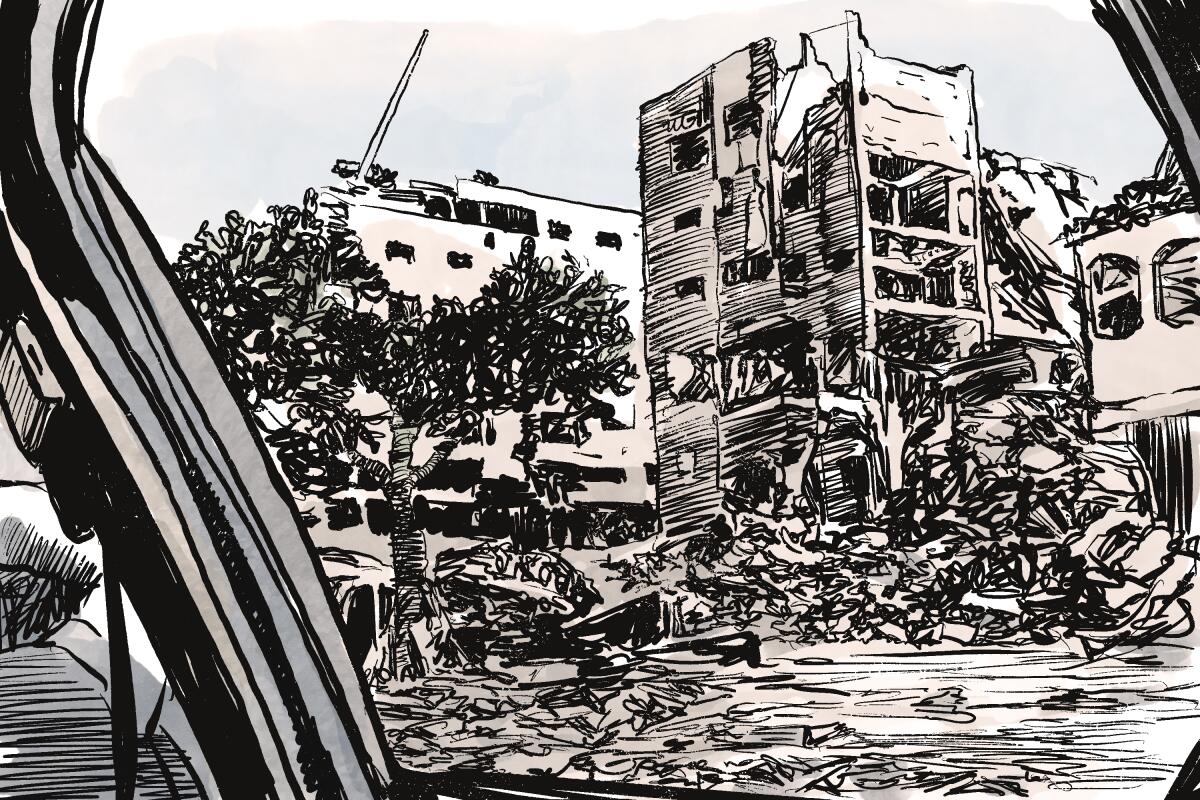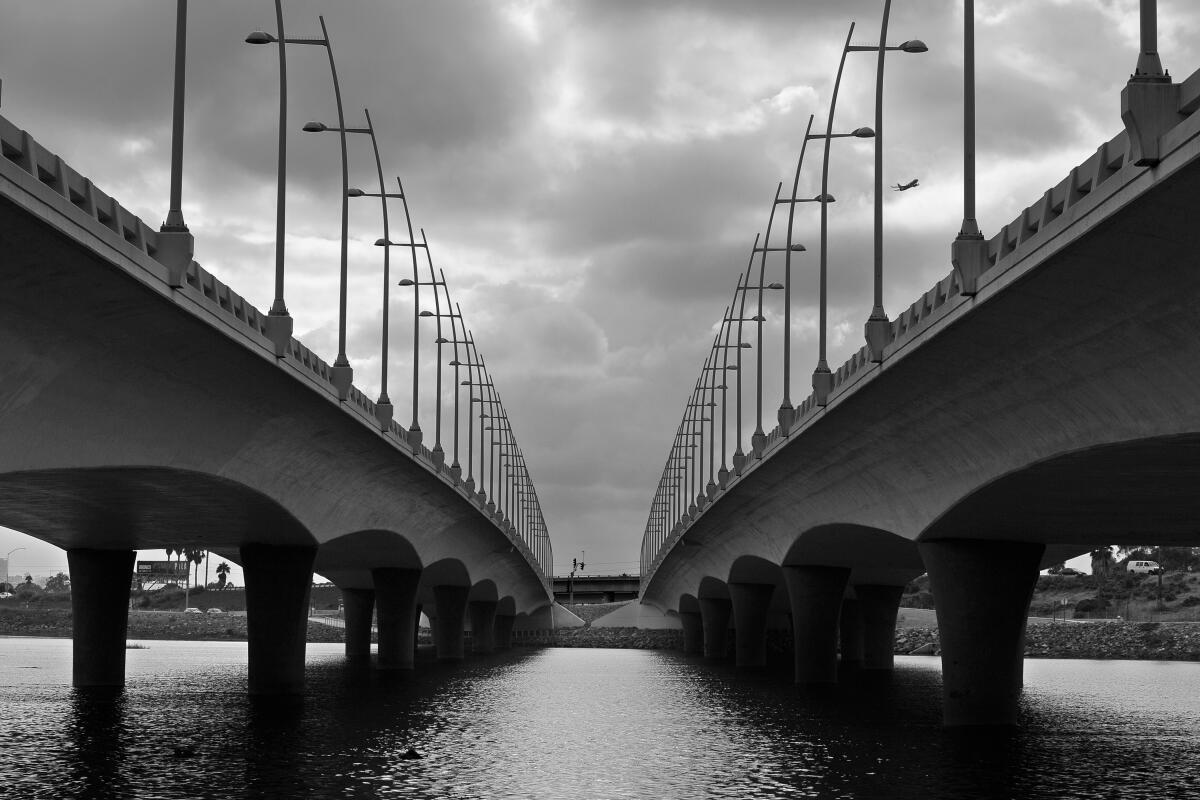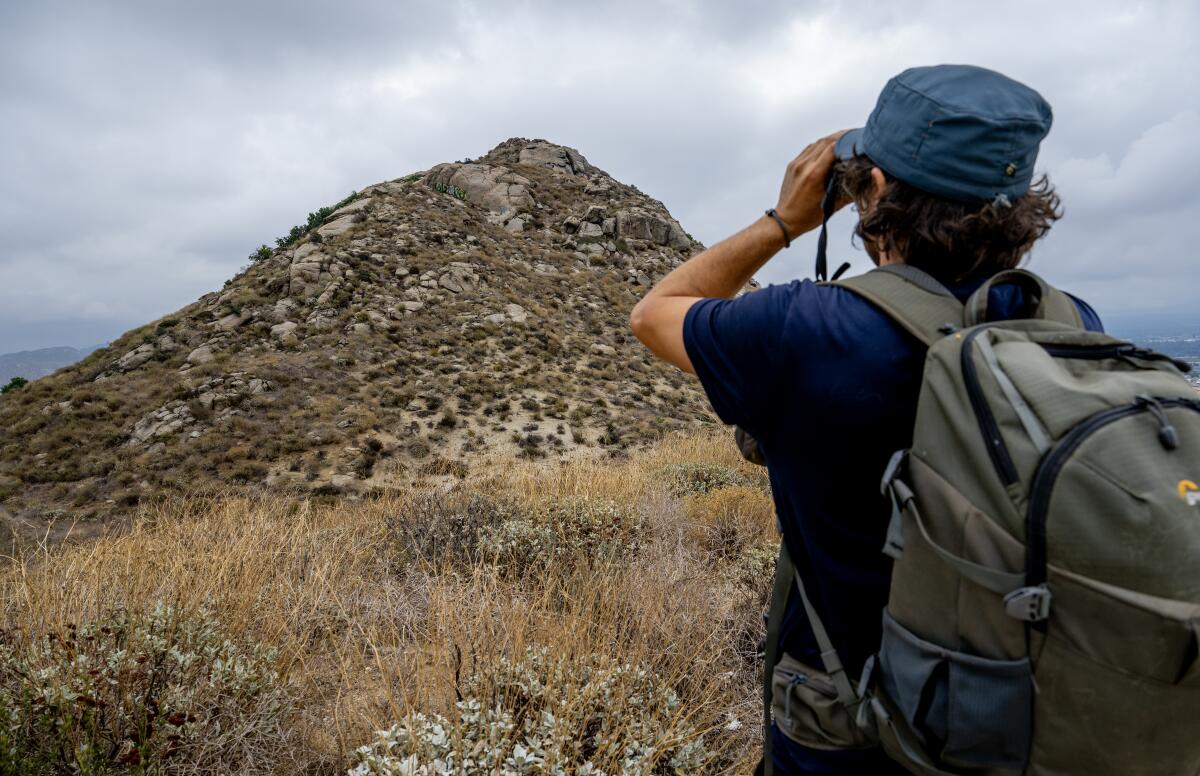‘I was crying, screaming, praying, terrified’: A Gaza resident reports on life under siege

- Share via
Good morning. It’s Tuesday, Nov. 7. I am Nabih Bulos, the Times’ Middle East Bureau Chief. Here’s what you need to know to start your day.
- Our special correspondent in Gaza describes the situation on the ground
- California voters disapprove of Gov. Gavin Newsom’s performance
- Meet drumboxing, L.A.’s newest workout class
- And here’s today’s e-newspaper
Sign up for Essential California
The most important California stories and recommendations in your inbox every morning.
You may occasionally receive promotional content from the Los Angeles Times.
Israel’s month-long siege and bombing campaign of Gaza
It was early morning on Oct. 7, a Saturday, when the Palestinian militant group Hamas mounted a devastating land, air and sea assault from Gaza on Israel, killing some 1,400 people (most of them civilians) and kidnapping more than 200 others in what was the deadliest attack Israel had suffered in 50 years.
The Hamas operation was unprecedented in scale and complexity — using drones, powered paragliders, bulldozers, and some 1,500 commandos. It upended Israeli leaders’ years-long belief that the Gaza Strip — the Palestinian territory, crowded with 2.3 million people, that Israel has blockaded for 17 years — could be contained.
As Israeli families scrambled for word of their loved ones while others mourned their dead and took stock, Israel began bombarding Gaza, vowing to invade and destroy Hamas.
This isn’t Israel’s first war on Gaza — by some counts, it is the 14th — and decades of shrinking Palestinian territory and increasing despair in any notion of statehood preceded the Hamas operation. Yet it seems clear there can be no return to the status quo.
Since Oct. 7, the Israeli air campaign on Gaza has killed more than 10,000 people, according to the Hamas-run Palestinian Health Ministry. The United Nations estimates that more than 40% of the dead are children and that two-thirds of the population are now displaced. Though aid is trickling in, it remains minuscule compared to the need. There’s a dire shortage of drinkable water, and the lack of fuel — Israel has so far refused to allow any fuel deliveries — means hospitals are on the verge of shutting down.
Israeli tanks, meanwhile, have entered the territory’s north and are engaged in point-blank confrontations with Hamas militants within the maelstrom of rubble the strip has become.
With all eyes on Gaza, tensions have spiked across the other Palestinian territory inside Israel’s borders, the West Bank, which has been occupied by the Israeli military since 1967. Israeli settlers, who were already enjoying greater support under the right-wing government of Israeli Prime Minister Benjamin Netanyahu, have increased their attacks on Palestinian communities in recent weeks.
At the same time, Israel has waged a parallel campaign in the West Bank aimed at rooting out militants and Hamas sympathizers. Palestinian authorities say more than 150 people have been killed and thousands arrested, including many civilians, since Oct. 7.
Protesters have filled the streets in the West Bank and across much of the Arab world, and elsewhere. Arab leaders, who have pleaded for a cease-fire, warn the war must end soon before public rage grows uncontrollable.
But a cease-fire remains elusive, with Israel insisting that any stop in the fighting would benefit Hamas.
Every day brings fresh word of airstrikes in Gaza — hitting hospitals, refugee camps, bakeries as well as water, power and communication infrastructure — as civilian casualties multiply. Israel says it is targeting Hamas militants embedded within the populace.
On Monday, telecommunications in Gaza were cut off for a third time, meaning that we lost touch yet again with our correspondent in the enclave. We are withholding the correspondent’s name for safety reasons.
That correspondent, who has had to evacuate to the south of Gaza with family members, has been sending me dispatches when possible.
I compiled firsthand accounts — through phone conversations and messaging apps — from our stringer to give a sense of what it means to live in a place where nowhere feels safe.
Here is a section of the diary:
The whole sky turned to fire
At around 11 p.m., the bombing began. We were on the second floor. It was like something out of a movie — the windows had no curtains so we could see — and it was horrific: The whole sky turned to fire and the ground shook.
We first went to the staircase, all of us lined up and praying because of the shrapnel flying everywhere and the place shaking. When part of the wall fell on the stairs, we ran down to the basement and sat on top of each other there.
When the strikes continued, things got even scarier. Debris was hitting people, and we could smell gas. There was a nurse who was sewing up a woman’s head after she got hit with a piece of cement from the walls. It was chaos. I forgot I was a journalist. I was crying, screaming, praying and terrified.
We knew the center shouldn’t be under threat. At that point it had no evacuation order, and the zanaanas — drones — could see the place was full of refugees. The strikes finally stopped at 3 a.m., only to start again from 7 to 8:30. That morning, we felt like we were given a new lease on life. (I found out the center was hit directly two days later, after it had received an evacuation order.)
After that intense night, I managed to find a brave driver who brought us to the south of Gaza. We didn’t even stop home to get anything because there was shelling nearby. In any case, people still in the area told us that, although our building wasn’t hit, belongings in the apartment are destroyed because of the attacks all around it.
You can read the rest of our stringer’s account here, and find more coverage of the Israel-Hamas war here.
Today’s top stories

Politics
- A new poll finds that California voters disapprove of Gov. Gavin Newsom‘s performance as governor.
- Free from L.A., Eric Garcetti is reinventing himself in India.
- Trump erupts in a chaotic day of testimony, in a rare glimpse of the ex-president under oath.
- Supreme Court hears major test of 2nd Amendment gun rights in domestic violence case.
Labor
- Disneyland workers are primed for a big salary bump after winning a living-wage legal battle.
- SAG-AFTRA responds to studios’ ‘last, best and final offer’ as actors’ strike drags on.
Sports
- Anthony Davis is ‘going to be fine’: Takeaways from Lakers’ loss to Heat.
- Clippers can’t keep pace with Knicks in James Harden’s debut.
- Adem Bona lives up to his billing as UCLA’s best player in season-opening win.
More big stories
- Here’s the life that droves of Californians moving to Texas are finding.
- ‘The tenant from hell’ moves out of Brentwood Airbnb after 570 rent-free days. She said she had a right to stay.
- A prominent L.A. attorney was accused of misleading a judge in the DWP scandal.
- In Culver City, a gathering of indie filmmakers who used AI software to make short films takes place amid a broader Hollywood reckoning with automation.
- Dog lovers push back against L.A.’s plan for a $58-million bike path in the Sepulveda Basin.
- California extreme weather whiplash: So long, drought. Hello, El Niño.
- Vivian Folkenflik, UC Irvine lecturer who taught thousands of students, dies at 83.
- Cody Dorman, who inspired a nation over his bond with a horse, dies.
- Remembering ‘bighearted’ film programmer Doug Jones, who helped relaunch Vidiots.
Get unlimited access to the Los Angeles Times. Subscribe here.
Commentary and opinions
- George Skelton: Red flag laws stop shootings, a lesson Maine could have learned from California.
- Opinion: The Supreme Court should protect domestic violence victims from guns, even if the founders didn’t.
- Jean Guerrero: Here’s how Biden can win on immigration by outmaneuvering the GOP.
- Robin Abcarian: Holy you-know-what! When did the kids start swearing like sailors?
- Opinion: Biden is losing to Trump in a new poll. Does that pass the smell test?
Today’s great reads
An ancient California tree may be threatened by a proposed Riverside County development. It started life near the end of the last Ice Age, nestled between two boulders on a rise in the Jurupa Hills of Riverside County — a shrubby oak tree estimated to be 13,000 years old, making it one of the oldest living organisms on Earth. But this legendary survivor may soon be looking out at tract homes and warehouses, if the city of Jurupa Valley approves a developer’s proposal.
Other great reads
- To honor victims of transfemicides, a community in Mexico City celebrates Día de Muertos.
- Emily Spreeman has been a game-changer for U.S. soccer and deaf athletes.
How can we make this newsletter more useful? Send comments to [email protected].
For your downtime
Going out
- 🥊 Try drumboxing, a new “brain fitness” technique developed by a percussionist who plays with the Los Angeles Opera.
- 🎧 Listen to your favorite albums with other fans at Record Club, an immersive listening experience designed to replicate the feeling of watching a film in a theater.
- 👨🍳 The best places to eat and drink in L.A. right now, according to our food writers.
Staying in
- 🎮 I tried a breakup simulator video game. Here’s what it taught me about the myth of “moving on.”
- 🍲 Lean into an autumnal mood with this recipe for creamy butternut squash soup with ginger.
- ✏️ Get our free daily crossword puzzle, sudoku, word search and arcade games.
And finally ... a great photo
Show us your favorite place in California! Send us photos you have taken of spots in California that are special — natural or human-made — and tell us why they’re important to you.

Today’s great photo is from Phil Hermanson of Lincoln, Calif.: The newly opened West Mission Bay Drive Bridge in San Diego. Phil writes you “can see an airplane soon after taking off from the airport.”
Have a great day, from the Essential California team
Nabih Bulos, Middle East bureau chief
Elvia Limón, multiplatform editor
Kevinisha Walker, multiplatform editor
Laura Blasey, assistant editor
Karim Doumar, head of newsletters
Check our top stories, topics and the latest articles on latimes.com.
Sign up for Essential California
The most important California stories and recommendations in your inbox every morning.
You may occasionally receive promotional content from the Los Angeles Times.






